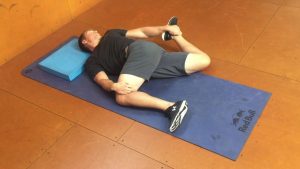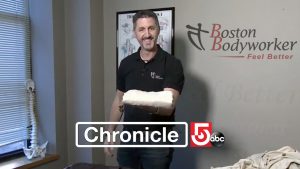Sprain vs. Strain; What’s the Difference?
Sprain vs. Strain; What’s the Difference?
So you think you might have sprained or strained something. How do you know which it is, and does it matter? You’ve heard the two terms your entire life, but did you know that there is not only a major difference between them, there are also varying grades and degrees of them?
For starters, you STRAIN muscles (and tendons), and you SPRAIN joints (ligaments/joint capsule). The difference may seem inconsequential when considering the acute pain of the situation, but when determining the extent of the injury and the appropriate approach to recovery, you should know what you are mending. Either injury can be a nag, but the key is to understand the severity in order to best determine the appropriate time to consider a return to activity. Typically, you should consider a window of anywhere from 5 days to 6 weeks for a full recovery. Injuries can vary in healing time depending upon the amount of damage (degree or grade of injury). A good rule of thumb I like to use is when you feel no pain or instability in the injured area, you should likely wait another 25% of the time it has taken to get to that point. This means that when the injured tissue is healing, you will experience a period when you THINK it is healed, but it is still “paper thin” and even the mildest aggravation will likely cause an exacerbation of the original injury. This is the hardest part of the recovery. You feel ok. You have a schedule to keep. You want to stay on track, but you end up coming back too soon. Have respect for the body’s ability to remodel collagen and allow it to do what it does naturally. Typically when we see injuries that are on-going or “repetitive”, it’s primarily due to pre-mature use of the injured area.
Sprains
Sprains can be a real nuisance. Often, people who have sprained an ankle, for example, will report that they frequently re-injure the same ankle frequently. This is because unlike muscle and tendons that have contractile fibers (they shorten and lengthen), ligaments do not. Ligaments are designed to stabilize a joint, so they have VERY few contractile fibers. When they are placed under harmful load, they tear partially or completely and in cases of grade III sprains, they can tear off the bone they are attached to. The recovery process depends upon the grade of the sprain.
Ligament fiber stretching, or tearing is referred to as a sprain. Sprains are described by the grade of the injury such as mild or grade 1, moderate or grade 2, and severe or grade 3. In a mild sprain only a few ligament fibers are torn and the ligament has likely undergone stretching that is not permanent. You are likely to feel pain with stretching the ligament, the joint may be swollen, and the muscles around the joint may be in spasm. In moderate or grade 2 sprains a more significant number of ligament fibers are torn. The ligament has likely undergone some degree of overstretching, and will remain somewhat overstretched, with the result being some degree of joint laxity. Pain will usually be moderate to severe when the ligament is stretched, local spasm is likely in surrounding muscles, and there will likely be moderate swelling. When the ligament is severely torn or ruptured the sprain is a grade 3 or severe sprain. Most if not all ligament fibers will no longer be intact, and will need to be reattached. Permanent changes in joint stability are likely. Pain will usually be severe at the time of injury, but may not be present later on with joint movement if the ends of the ligament are no longer connected. There will be a moderate level of swelling around the affected joint and local muscle spasm is likely.*
Mild or grade 1:
- Few ligament fibers torn.
- Temporary ligament stretching possible
- Mild to moderate pain with stretch
- Minor swelling
- Local muscle spasm likely
Moderate or grade 2:
- More ligament fibers torn
- Ligament overstretching likely
- Joint laxity likely
- Moderate to severe pain with stretch
- Moderate swelling likely
- Local muscle spasm likely
Severe or grade 3:
- Severe tear or rupture
- Fibers likely need repair
- Permanent changes in joint stability likely
- Pain severe at injury
- Pain may recede if ends detached
- Moderate swelling likely
- Muscle spasm likely
Strains
Muscle strains are graded at three levels – first degree or mild, second degree or moderate, and third degree or severe. In a first-degree strain only a few muscle fibers are torn. There is likely to be some level of post-injury soreness, but the individual will be back to normal levels of activity rather quickly. In a second-degree strain there are more fibers involved in the injury. There is likely to be a greater level of pain with this injury, and a clear region of maximum tenderness in the muscle tissue. A third-degree strain involves a severe tear or a complete rupture of the muscle tendon unit. In a complete rupture there is likely to be significant pain at the time of the injury. Notably, pain may be minimal if the muscle ends are completely separated because moving the limbs will not put additional tensile stress on the separated ends of the muscle.*
First degree:
- Minor weakness evident
- Minor muscle spasm
- Swelling possible, minor
- Minor loss of function
- Minor pain on stretch
- Minor pain in resisted isometric contraction
Second degree:
- Weakness more pronounced
- Weakness due to reflex inhibition
- Moderate to major spasm in injured muscles
- Moderate to major spasm in nearby muscles
- Moderate to major swelling
- Moderate to major impaired function
- Pain likely strong during stretch
- Pain likely strong with resisted isometric contraction
Third degree:
- Pronounced muscle weakness
- Muscle may not function
- Spasm if muscle is intact
- Surrounding muscles in spasm
- Moderate to major swelling
- Loss of function due to reflex inhibition
- Pain severe at injury, but may recede
If you follow these guidelines and are vigilant about providing proper care, your injury should mend and not give you further troubles. If you rush your return, you will only be slowing the process. This is too often the case and clients are often troubled by whey they are still having issues. Your body is remarkable and resilient. However, it need you to be disciplined to protect it when the time comes.
*excerpt of this were originally written by Whitney Lowe, Founder of the Academy of Clinical Massage
Ready to #feelbetter?
You're just a click away from a wicked good massage!
-

60 Minute Massage Gift Card
$170.00 Add to cart -

90 Minute Massage Gift Card
$255.00 Add to cart -

Mini Aer Small Room Air Purifier
$149.00 Add to cart -
Sale!

Thera-Pearl Sports Pack/Hot Cold
Original price was: $14.99.$12.99Current price is: $12.99. Add to cart -

3 Somadome Sessions Gift Card
$135.00 Add to cart -
Sale!

TheraBand® Stretch Strap
Original price was: $19.99.$14.99Current price is: $14.99. Add to cart -

20 Minute Somadome Gift Card
$45.00 Add to cart -

TheraBand CLX Connective Loop
$14.99 Select options
Please Hold the R.I.C.E.
Please Hold the R.I.C.E. I have been in the rehabilitation field since 1992. Since the very beginning I was always told that when treating an acute injury you should follow the age old acronym of R.I.C.E. or Rest, Ice, Compression and Elevation. The concept was originally introduced by one of the most respected names in…
Read MoreHave a Brettzel!
Have a Brettzel! In the world of flexibility and stretching, there are a bevy of stretches that have likely been shown to you over the years. It’s hard to remember them if you don’t consistently do them and the ones you likely DO recall are the ones that are probably easiest for YOU to perform.…
Read MoreTake 5: A Stress Break
Take 5: A Stress Break I will be the first in line to inform you of the benefits of a 60 minute massage treatment. However, what if your massage is not scheduled for another week or worse, not even scheduled? Well, as a firm believer and trumpeter of self-care, here is a pretty neat trick…
Read MoreIs it a Muscle Cramp or Muscle Strain?
Is it a Muscle Cramp or Muscle Strain? Last week when my daughter walked in from cheerleading practice, I noticed her limping. When I asked her why she was limping, she went on to explain what I often hear and have seen from my athletes. Having been fortunate to evade serious injuries until this point…
Read MoreWork From Home Hacks!
With so many of you experiencing a new work environment, you are probably starting to notice that many of the chronic aches and pains you had experienced in the past at work on a daily basis, have seemingly disappeared. In their place however, are a new set of sensations we are experiencing due to such…
Read MoreHow to Fold a Fitted Sheet
Have a ‘sheety’ Valentine’s Day! Today is Valentine’s Day, otherwise known to most as a #greetingcardholiday. As I walked out of CVS this morning, I laughed at the people who were fighting for position in the greeting card aisle. Valentine’s Day is about showing love for someone in your life, not elbowing strangers while cursing…
Read MoreHappiness is Contagious
Happiness is Contagious Maybe mom was right. Research suggests that surrounding yourself with friends and family who are happy can actually increase your own happiness. Scientists at Harvard University and the University of California, San Diego, found that emotions, particularly happiness, have a viral effect in how they spread from one person to another. For…
Read MoreDe-stressing the Commute
De-stressing the Commute Turning Road Rage into Road Sage The average American commuter spends an hour a day driving to and from work. During this stressful, stop-and-go time, it’s likely that blood pressure increases, adrenaline begins pumping, and muscles constrict and tighten. By the time you get home, you’re wiped out and grumpy, and you…
Read MoreWhat’s the Scoop on your Poop?
What’s the Scoop on your Poop? Being the father of two girls, I know I have my work cut out for me. I have come to accept that there are lessons that I can teach my children and there are others lessons they will simply have to learn through personal experience. One of the lessons…
Read MoreHalloween Hacked!
Halloween Hacked Check out these simple hacks! Who among us doesn’t love Halloween. If I am being honest, it used to be me! You see, I typically found myself in trouble around this time of year when I was in grammar school. Let’s just say that I wasn’t always motivated to do what was asked…
Read More








